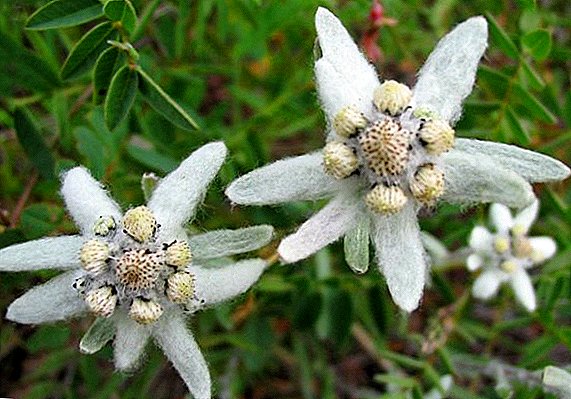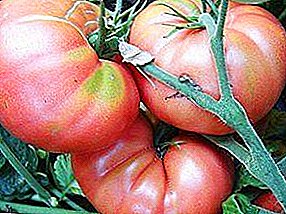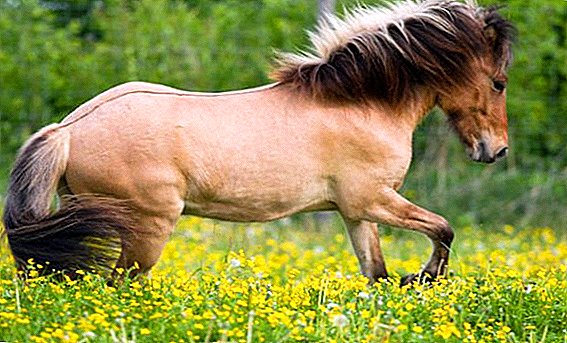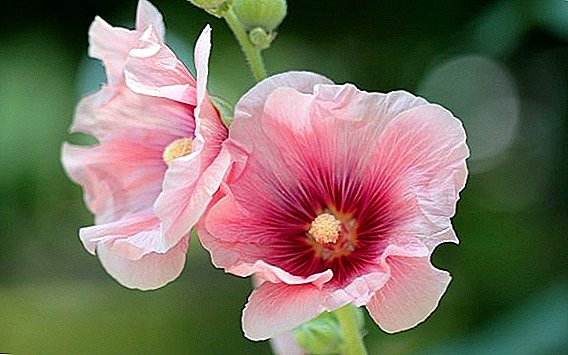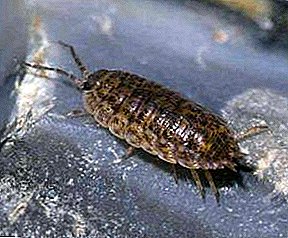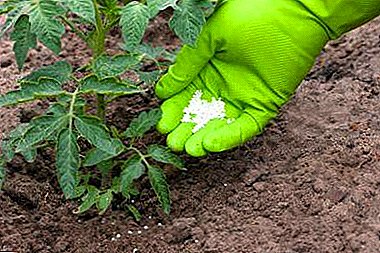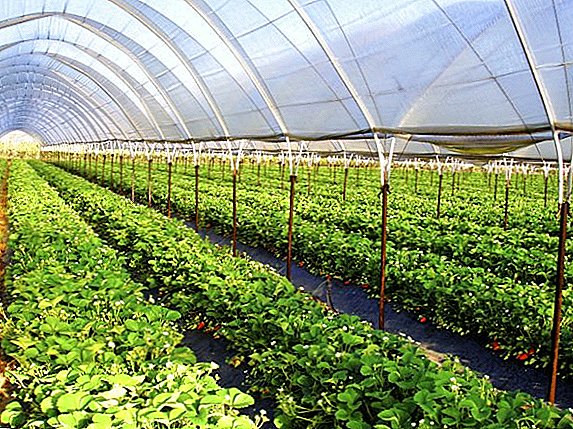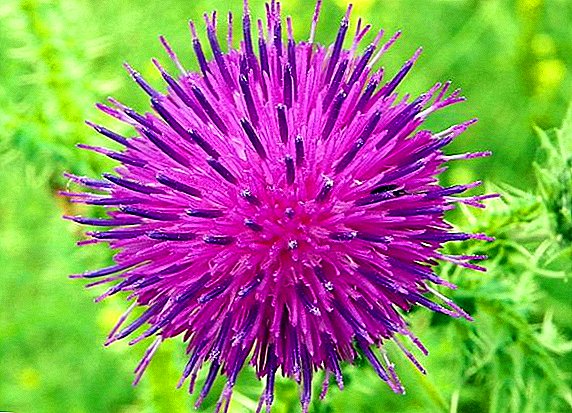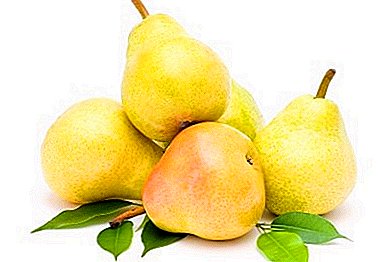 Ephedra are often appreciated for their ability to decorate any part throughout the year. In spring and summer, they emphasize the beauty of blooming ornamental flowers and shrubs, and in winter they are distinguished by bright green spots against a background of gray frozen ground and bare trees. Mountain pine, about planting and caring which will be discussed, loved by summer residents and landscape designers due to its compact size and unpretentiousness.
Ephedra are often appreciated for their ability to decorate any part throughout the year. In spring and summer, they emphasize the beauty of blooming ornamental flowers and shrubs, and in winter they are distinguished by bright green spots against a background of gray frozen ground and bare trees. Mountain pine, about planting and caring which will be discussed, loved by summer residents and landscape designers due to its compact size and unpretentiousness.
Mountain pine: description of the plant
 The mountain pine (Pinus mugo) is a shrub species of thick pine, although it is trees that are more common in the wild. The height of the shrubs reach 4-5 m, and the trees - 7-8 m. Shoots at the mountain pine - short, creeping along the ground and curved to the top. The root system is superficial, strongly branched. The needles have a dark green color. The length of the needles is up to 4 cm. They are collected in bundles of two pieces, slightly twisted. Their lifespan ranges from 3 to 5 years. At six or eight, cones appear on a pine tree, which add decorativeness to the tree. They are cone-shaped, light brown in color, 3-6 cm in length.
The mountain pine (Pinus mugo) is a shrub species of thick pine, although it is trees that are more common in the wild. The height of the shrubs reach 4-5 m, and the trees - 7-8 m. Shoots at the mountain pine - short, creeping along the ground and curved to the top. The root system is superficial, strongly branched. The needles have a dark green color. The length of the needles is up to 4 cm. They are collected in bundles of two pieces, slightly twisted. Their lifespan ranges from 3 to 5 years. At six or eight, cones appear on a pine tree, which add decorativeness to the tree. They are cone-shaped, light brown in color, 3-6 cm in length.
Did you know? The existence of small conifers with slow growth has been known since the seventeenth century. Their homeland are the highlands of Central and Southern Europe. Later, Pinus mugo spread in garden culture around the world.
Pine Pinus mugo has a number of advantages:
- has a good degree of winter hardiness;
- drought resistant;
- wind resistant due to strong root system;
- has strong branches that do not break off under the snow cover;
- undemanding to the composition of the soil;
- tolerates pruning;
- fewer other types of pine trees are affected by diseases and pests;
- suitable for planting in urban environments, resistant to air pollution;
- long-liver - can live for 1000 years.
Mountain pine breeding occurs in three ways: cuttings, grafting and seeds. Slow growth rates are typical for the ephedra: the annual growth is 10 cm in height and 15 cm in width. At the age of ten, the tree reaches a maximum height of 0.6-1 m, with a diameter of 0.6-1.8 m.
Pine selection for the site
If you decide to plant a hodge at the summer cottage and you do not know where to start, then among the recommendations on how to plant a mountain pine, the priorities will be advice on choosing a suitable garden for the variety and choosing a seedling at the time of purchase.
Variety selection
Mountain pine has several subspecies and ornamental varieties, but we will now describe only some of the most interesting ones. Of the subspecies emit: trees, multilateral and elfin shrubs. In the gardens, the most common are shrub (mugus) and elfin (pumilio) forms. Both the first and second have many varieties. These are mainly dwarf and ground cover shrubs. They have different forms of crown (spherical, pillow, columnar, etc.), height (from 40 cm to 4 m), color of needles (bright green, dark green, gray, golden).
Variety "Dwarf". The shrub grows up to 2 m in height. It has a spherical crown. Needles - dark green. It is used in single landings and groups on the ground lawn, rocky areas. Also planted in containers, on the roofs.
Variety "Pug". Dwarf shrubs, reaching a height of 1.5 m. The height and diameter of the crown are usually the same size. The crown grows as a ball. Branches densely branched. The needles are dark green, straight, 2-4 cm long. Designers prefer to grow this variety as a tapeworm, in groups in rocky gardens.
Variety "Mini Pug". Presented by a dwarf shrub, 40-60 cm high. The crown grows up to 1 m in diameter and has a pillow shape. Needles - dark green, needle. Suitable for planting in light shade. Apply in single and group landings on stony hills.
Variety "Kolumnaris". The maximum height of the shrubs of this species is 2.5 m, the diameter of the crown is up to 3 m. The crown is narrowly coniferous, the needles are dark green, and needle-like. Suitable for planting soliter and groups, in rocky gardens, on the slopes.
Variety "Winter Gold". Dwarf shrub with a spherical crown. The needles change color depending on the season: in the summer it is light green, in the fall it is golden yellow. The plant reaches a height of 50 cm and a diameter of 1 m.
Did you know? The exotic varieties of mountain pine, often planted in the garden, also include the Cockade, which has on two needles two yellow stripes resembling dragon eyes.
Variety "Compact". The original tree height of 4-5 m, multi-barreled. Crown in the form of a ball. The needles are painted in a dark green color, 2.5-3.5 cm long. Recommended for planting in alpine hills, singly and in groups.
Variety "Frisia". Reaches sizes up to 2 m. It has a dense, strongly branched crown and straight branches. It is used in single and group plantings on stony territories, and also as an interior plant.
Variety "Ofir". Interesting due to the shape resembling a pin. In size, this pine is miniature - 0.4 m high and 0.6 m wide. At the top, the needles are golden yellow, the branches located in the shade and the inside of the crown are bright green.
Seedling selection rules
When choosing a tree for planting, pay attention to the fact that its appearance in general speaks about health and normal development. The tips of the needles should not be dry or yellow. Before you plant a mountain pine, decide whether you will buy a seedling with an open root system or with a closed one. The last option is a tree in a pot that can better tolerate planting and adapt more quickly to new conditions.
For planting, it is better to choose young seedlings, up to five years old. With special care you need to inspect the root system of the seedling, as it should be free from damage and rot. If you buy a tree in a container, then it is important that it be grown in this container, and not planted in it shortly before it goes on sale. A simple method will help determine this: if the roots look out from the drainage holes of the container, then the plant has grown in it.
Important! It is better not to buy seedlings in supermarkets, but in nurseries or horticultural centers. Chances to buy there high-quality healthy seedlings are much greater.
Features of planting mountain pine in the country
From the right choice of a site for planting pine in the country and picking up the soil depends on the future appearance of the plant and the welfare of its development.
How to choose a landing site that you need for successful growth
Mountain Pine is a light-loving plant. Some varieties can put up with penumbra, but in the shadows almost everyone dies. Therefore, it is necessary to choose open, well-lit areas for planting a conifer.
What should be the ground for planting mountain pine
Mountain pine can grow on any soil, even very poor. It does not pay attention to the acidity of the earth, but the most decorative and well-developed plant will be when planted in sandy and sandy sandy soils, with a weak acid reaction. If the ground for pine contains too much sand, you can add clay to it.
The timing of planting pine in his garden
The best time for planting pine will be spring: April-May. Also, the tree can be planted in early autumn: in early September.
Important! For Mugus pine, planting in the fall will be undesirable, since it may not have time to get stronger for the upcoming frosts.
The scheme of planting mountain pine seedlings
Here is a diagram of how to plant a mountain pine. To do this, you need to dig a hole a little larger than an earthen ball - optimally 7-10 cm wide. The depth of the pit should be 0.8-1 m. The bottom is covered with a 20-centimeter layer of drainage from gravel, small stones, broken brick, expanded clay, etc. This is necessary to prevent root rot. Drainage poured soil mixture.
For planting pine seedlings use a substrate consisting of:
- sod land - 2 parts;
- sand (clay) - 1 part.
 Also in the pit you can make compost, rotted manure or 30-50 g of nitrogen (complex) fertilizer. The sapling, without destroying the earthy coma, is carefully placed in the recess and covered with earth, leaving the root neck on the surface. The ground must be slightly compacted, and the trunk circle must be mulched. Also do not forget to water the sapling plentifully. If you plan to plant several pines, they should be placed at a distance of 1.5-4 m from each other.
Also in the pit you can make compost, rotted manure or 30-50 g of nitrogen (complex) fertilizer. The sapling, without destroying the earthy coma, is carefully placed in the recess and covered with earth, leaving the root neck on the surface. The ground must be slightly compacted, and the trunk circle must be mulched. Also do not forget to water the sapling plentifully. If you plan to plant several pines, they should be placed at a distance of 1.5-4 m from each other.
That's the whole technology, how to plant pine mountain in spring. The first time after planting a young bush will need to pritenyat from the sun's rays, using spruce branches or spunbond. Plants up to 5 years old usually easily tolerate transplantation, quickly take root in a new area, so for them you can change the planting place several times. Older specimens will take longer and more difficult to take root in a new place, so they need to immediately pick up an area for permanent growth. Otherwise, before transplanting you will have to prepare the root system in a special way or freeze it with an earthen clod.
Mountain pine care
Caring for the mountain pine will not make any special difficulties, because the plant is not demanding for irrigation and easily tolerates drought. The soil moisture level must be monitored when growing young plants. The first month they need to be watered once a week, using 1-2 buckets of water for one tree. In the future, watering will be required only in long, dry periods. With a strong compaction of the soil will need its loosening. However, it is necessary to take into account the factor that the root system of the plant is located quite close to the soil surface.
Rules for feeding mountain pine
Here's how to fertilize pine:
- nitroammofoskoy (40 g) or other nitrogen fertilizer during planting, is introduced into the pit;
- in the spring, in the first and second year of life, complex mineral fertilizers in the tree trunk circle (for example, "Kemira-Universal", at the rate of 30-40 g per plant).
Important! It is impossible to fertilize a pine tree in the autumn, because the young shoots will not have time to wood to frost.
Two years after planting, the pine tree will no longer need fertilizers, as it is able to use the nutrients that accumulate in the thick coniferous bedding under it.
Pruning plants
 Since the crowns of decorative pines are so beautiful, they usually do not require a special haircut. Neat form can be formed by trimming or pinching young shoots by one third. So the crown will become more dense, and the shoots will slow growth. In the spring remove frozen and dried branches. Mountain pine tolerates frost well, but young plants require shelter. Also in the first two years they should be covered from the sun, starting in February. Like all conifers, pine is subject to spring sunburn of pine needles.
Since the crowns of decorative pines are so beautiful, they usually do not require a special haircut. Neat form can be formed by trimming or pinching young shoots by one third. So the crown will become more dense, and the shoots will slow growth. In the spring remove frozen and dried branches. Mountain pine tolerates frost well, but young plants require shelter. Also in the first two years they should be covered from the sun, starting in February. Like all conifers, pine is subject to spring sunburn of pine needles.
How to breed mountain pine
Mountain pine propagated by seeds, cuttings and grafts. The simplest and most common way is to grow seedlings from seeds. These pines practically do not give in to cuttings. At least, so far it has not been possible to successfully plant a pine variety Mugus in a similar way. Therefore, when breeding plants, preference is given to other methods.
Seed propagation
 Seed propagation is the simplest and most acceptable way to plant a beautiful and healthy pine. With such planting trees completely retain their decorative. Briefly describe the process of reproduction of pine sowing seeds. They can be sown both directly in open ground and in boxes, and in the second case, the percentage germination will be large. Ripening of pine seeds occurs in the second year after pollination. Seeds of double-coniferous species would be better to stratify beforehand for 30 days, although it is possible to do without stratification. Planted better in the spring. Pyatikhvarnik sow in the fall, at least in the spring. Their seeds are amenable to longer stratification - for 4-5 months.
Seed propagation is the simplest and most acceptable way to plant a beautiful and healthy pine. With such planting trees completely retain their decorative. Briefly describe the process of reproduction of pine sowing seeds. They can be sown both directly in open ground and in boxes, and in the second case, the percentage germination will be large. Ripening of pine seeds occurs in the second year after pollination. Seeds of double-coniferous species would be better to stratify beforehand for 30 days, although it is possible to do without stratification. Planted better in the spring. Pyatikhvarnik sow in the fall, at least in the spring. Their seeds are amenable to longer stratification - for 4-5 months.
When sowing in closed ground, use boxes made of any materials. They pre-make drainage holes. The substrate should be light and loose. It is advisable to sprinkle peat on top of it in order to avoid the development of fungal diseases. Also, the soil must be kept in the oven for disinfection. Seeds are disinfected in a solution of "Fundazol" or "Fitosporin".  In the boxes they are sown shallowly, at a distance of 5 cm from each other. Also, seed can be simply poured onto the soil, and then slightly loosened. Capacity cover with foil. Sprouts should appear within a month. After that they will need to be opened and watered regularly. In the open ground well-rooted seedlings can be moved in 1-2 years. When transplanting the root system is not exposed.
In the boxes they are sown shallowly, at a distance of 5 cm from each other. Also, seed can be simply poured onto the soil, and then slightly loosened. Capacity cover with foil. Sprouts should appear within a month. After that they will need to be opened and watered regularly. In the open ground well-rooted seedlings can be moved in 1-2 years. When transplanting the root system is not exposed.
Cuttings
Mountain pine, however, as well as pine, reproduction by cuttings does not tolerate well. This happens due to the fact that with this method the tree is difficult to root. 7-10 cm long cuttings are taken only from saplings, from annual upright branches in late April. They are cut off along with a part of the bark of the trunk - the heel. Then for three days, it is advisable to hold them in a container with water and 12 hours in a solution that stimulates root growth.  When breeding pines with cuttings, a container with a substrate of earth, peat and sand is prepared in advance. At the bottom is laid drainage. The cuttings go deeper by 4–5 cm. The distance between them is kept within 10 cm. Then it is necessary to organize a greenhouse with lower heating. At home, the temperature at the bottom of the tank can be maintained by placing it in a box with compost, manure or dry leaves. If the cuttings are planted in spring, then rooting should be expected only at the end of the autumn of next year. When grafting in open ground, the lower layer of soil is covered with drainage from gravel or gravel. The beds are laid in layers: compost, soil mixture, sand. The bottom of the cuttings are treated with "Zircon" or "Epin." Rooting occurs within 5-6 months.
When breeding pines with cuttings, a container with a substrate of earth, peat and sand is prepared in advance. At the bottom is laid drainage. The cuttings go deeper by 4–5 cm. The distance between them is kept within 10 cm. Then it is necessary to organize a greenhouse with lower heating. At home, the temperature at the bottom of the tank can be maintained by placing it in a box with compost, manure or dry leaves. If the cuttings are planted in spring, then rooting should be expected only at the end of the autumn of next year. When grafting in open ground, the lower layer of soil is covered with drainage from gravel or gravel. The beds are laid in layers: compost, soil mixture, sand. The bottom of the cuttings are treated with "Zircon" or "Epin." Rooting occurs within 5-6 months.
Graft
High grades can be propagated by grafting, and four-year-old seedlings are taken for stock. It is quite difficult to carry out the inoculation, and one more article will be required for a detailed description of the process of how the pine reproduces by this method. The advantages of reproduction by grafting are that the young tree adopts all the varietal qualities of the mother plant. When used in landscape design, mountain pine is planted in rock gardens, when planting slopes, in hedges, and is also used to fix the soil. It looks beautiful both as a tapeworm and in group plantings. It goes well with birch, larch, spruce, Balkan pines.
When used in landscape design, mountain pine is planted in rock gardens, when planting slopes, in hedges, and is also used to fix the soil. It looks beautiful both as a tapeworm and in group plantings. It goes well with birch, larch, spruce, Balkan pines.


